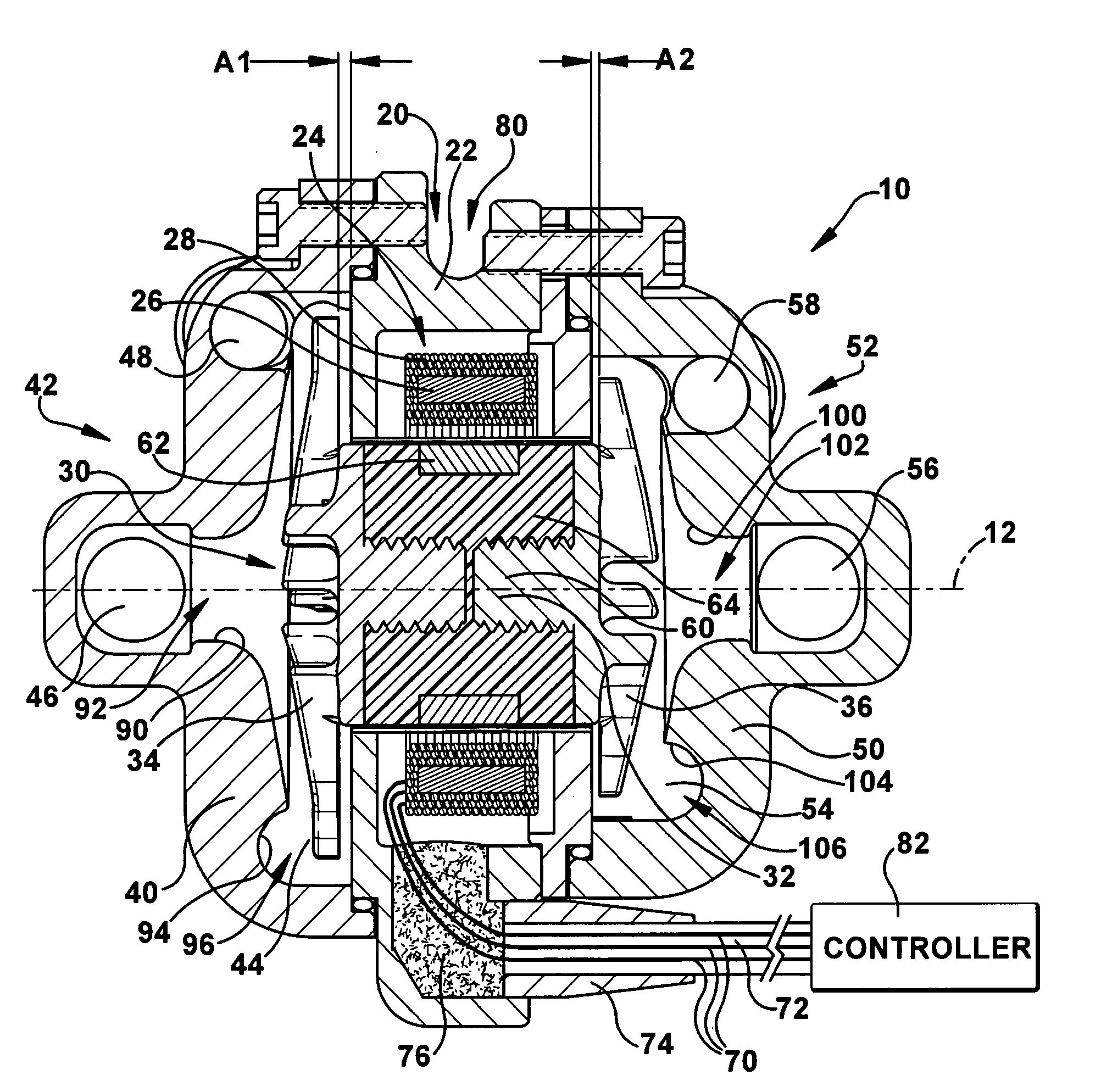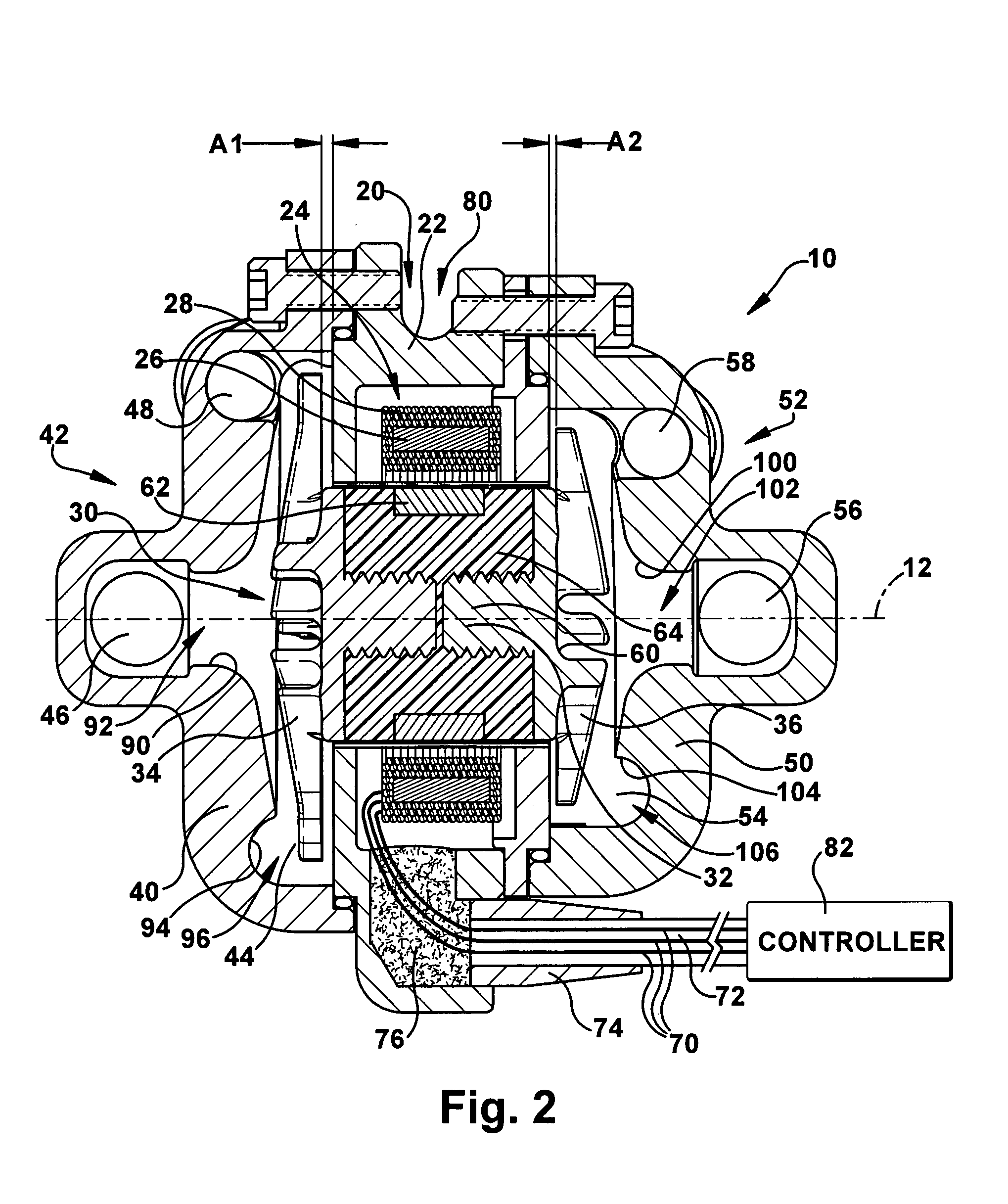Two-stage rotodynamic blood pump
a rotodynamic and blood pump technology, applied in the field of pumps, can solve problems such as affecting the relative performance of the inlet pressure balancer, and achieve the effect of altering the hydraulic performance of the pump
- Summary
- Abstract
- Description
- Claims
- Application Information
AI Technical Summary
Benefits of technology
Problems solved by technology
Method used
Image
Examples
first embodiment
[0023]The present invention relates to a blood pump. FIG. 1 illustrates a blood pump 10 according to the present invention. According to the present invention, the blood pump 10 is a total artificial heart (TAH) device capable of replacing a failing or damaged human heart. Those skilled in the art, however, will appreciate that the blood pump 10 could be suitable for non-TAH implementations, such as biventricular support. Those skilled in the art will also appreciate that the pump may be suited for purposes other than pumping blood, such as any implementation in which a dual or two stage fluid handling pump with pressure balancing features is desired. In the illustrated embodiments, the blood pump 10 is a two-stage centrifugal pump, which is described below in further detail. The blood pump 10 could, however, be a rotodynamic pump of any desired configuration.
[0024]Referring to FIGS. 1-3, the blood pump 10 includes a stator assembly 20, a rotor assembly 30, a left pump housing 40, a...
second embodiment
[0063]Based on this principle, using the blood pump 200, systemic and pulmonary pressure and flow characteristics can be controlled through adjusting the axial position of the rotor assembly 230. According to the present invention, the blood pump 200 is configured for active control of the axial position of the of the rotor assembly 230 and, thus, the geometry or configuration of the left and right pumps 242 and 252.
[0064]It has been found that, for constant system resistances, output flow and pump speed have a linear relationship. It has also been found that, for a given pump speed, there is an electrical power level, obtained by adjusting the axial position of the rotor assembly 230, that corresponds with balanced flows at the left pump 242 and right pump 252. As a result, the control algorithm executed by the controller 282 adjusts pump speed to provide a nominal systemic flow, while balanced systemic and pulmonary flows are achieved by adjusting of the axial position of the roto...
third embodiment
[0073]A blood pump 400 according to the present invention is illustrated in FIG. 7. The blood pump 400 of FIG. 7 has a configuration that is similar to the embodiment of FIG. 6, except that the embodiment of FIG. 7 includes a rotor assembly 410 that does not move axially to alter the pump geometry during operation. In this configuration, the rotor magnet 420 is the same length or longer than the stator core 422, which magnetically constrains the axial position of the rotor assembly 410.
[0074]The blood pump 400 of FIG. 7 may be particularly well-suited for use as a ventricular assist device (VAD), such as a bi-ventricular assist device (BiVAD) that combines right ventricular assist device (RVAD) and left ventricular assist device (LVAD) functions in a single pump. With an RVAD, the total pulmonary artery flow is shared between the VAD and native ventricle, so precise right / left pump control is not as critical as for a total artificial heart. It has been found that performance charact...
PUM
 Login to View More
Login to View More Abstract
Description
Claims
Application Information
 Login to View More
Login to View More - R&D
- Intellectual Property
- Life Sciences
- Materials
- Tech Scout
- Unparalleled Data Quality
- Higher Quality Content
- 60% Fewer Hallucinations
Browse by: Latest US Patents, China's latest patents, Technical Efficacy Thesaurus, Application Domain, Technology Topic, Popular Technical Reports.
© 2025 PatSnap. All rights reserved.Legal|Privacy policy|Modern Slavery Act Transparency Statement|Sitemap|About US| Contact US: help@patsnap.com



